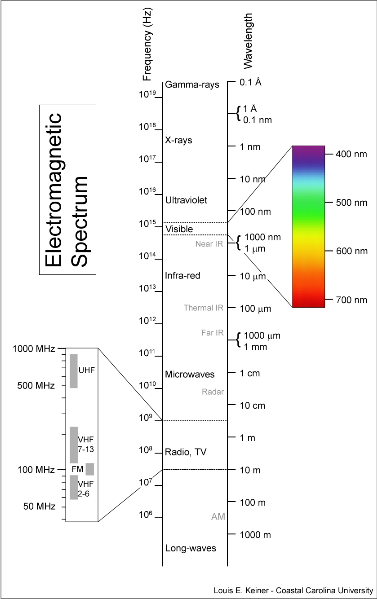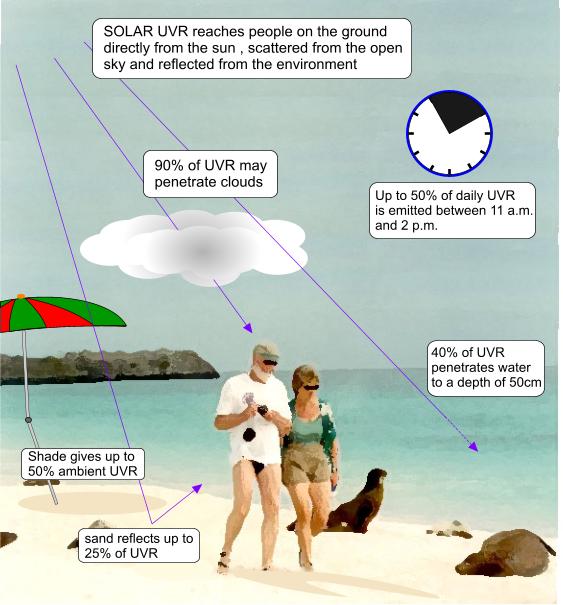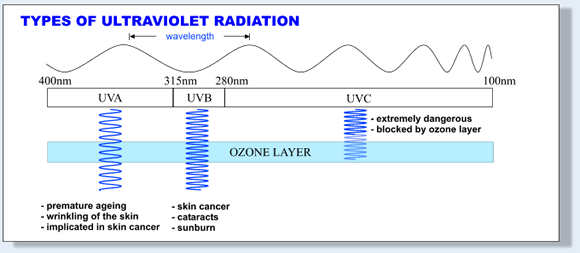The electromagnetic spectrum is considered a continuum of
visible and non-visible energies which radiate different wavelengths
and
frequencies of light. There are six major regions of EM spectrum as
well as
several intermediates. The major regions include radio, microwave,
visible
light, ultra-violet, x-rays and gamma rays. In a vacuum and moving
along the
spectrum a direct inverse relationship between frequency of the wave
and
wavelength is seen. As the frequency increases the wavelength
decreases. Due to
the intensity of the waves specific energies can be directly associated
to the
spectrum regions. Energies can range from low energy to very intense
energy and
include vibrational, electronic and ionization respectfully.

The region of the EM spectrum of interest, when looking at
sunscreens, is
ultra-violet. The source for UV radiation, as with all wavelengths of
light, is
from the sun. Ultra-violet radiation can reach us directly from the
sun,
penetrating the ozone, and epidermis alike. UV light can also reach us
by
scattering from the sky or even by reflecting off of the ground
surfaces and
the surrounding environment.

Within the region of ultra-violet radiation on the EM spectrum three specific UV radiations can be found, UVA, UVB, and UVC. Overexposure in any range can cause detrimental health affects; however, UVC is the most dangerous. The wavelengths of UVC are very short and very large quantum energy which can cause ionization. Fortunately for our ozone, ninety-seven to ninety-nine percent of UVC is blocked; therefore we only have to concern ourselves with protection against UVA and UVB rays.
